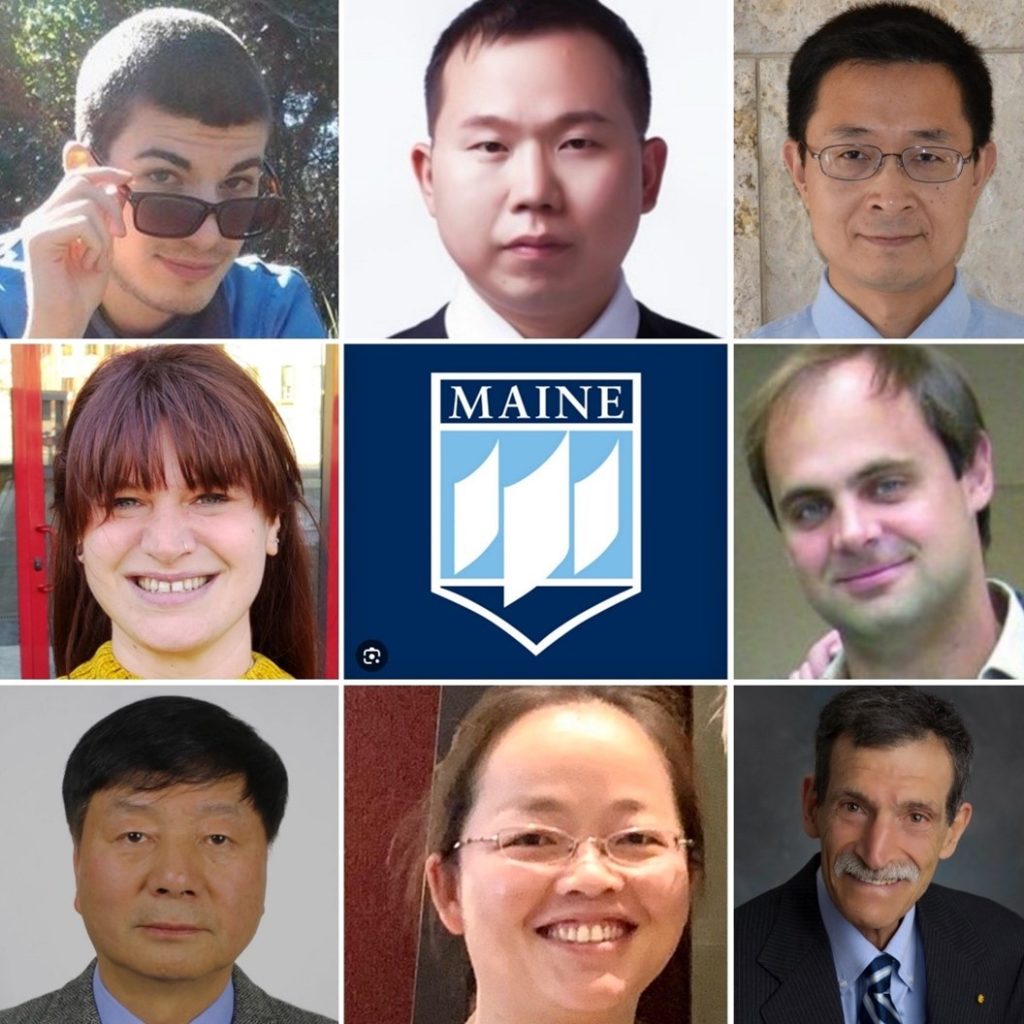Edward Grew with international team reports discovery of the new mineral “jianmuite,” named for the sky-ladder tree of Chinese mythology
Research Professor Edward Grew in the School of Earth and Climate Sciences is now in his 41st year at the University of Maine-Orono. During his career, Ed has participated in the discovery and characterization of 29 minerals new to science. His latest new mineral is jianmuite (“jian-moo-ite”), an oxide of titanium, aluminum and zirconium. The discovery was published in the April 2025 issue of the journal American Mineralogist by an international research team including mineralogist Chi Ma at Caltech and researchers in Italy and China.
The new mineral was independently discovered by Ma while studying fragments of the famous Allende meteorite, which fell in Mexico in 1969, and by a team in Italy and China working with Ed in research on minerals from chromite deposits in Tibet, China. The deposits are located near the Yarlung-Zangbo Suture Zone south of Lhasa, Tibet, a zone containing the largest economic chromite deposits in China.
Since the new mineral was found in specimens both of terrestrial and of extraterrestrial (meteoritic) origin, and because its full characterization as a new mineral required information from both sources, the authors decided to name it after “Jianmu” the sky-ladder tree, which according to Chinese mythology enabled gods and humans in primordial time to travel up and down between heaven and earth. Jianmuite was officially approved as a new mineral in 2023 by the Commission on New Minerals, Nomenclature and Classification of the International Mineralogical Association (CNMNC IMA).
Allende is a primitive carbonaceous chondrite containing some of the oldest solids in the solar system. Jianmuite and associated corundum and titanium oxides in the Allende meteorite were most likely early condensing phases in a cooling gas in the early Solar System. Jianmuite is the 20th new mineral discovered by Chi Ma in the Allende meteorite.
Ed Grew has previously worked with the team members from China and Italy in the characterization of 9 other new minerals discovered in the Tibet, China chromite deposits. A number of these new minerals, including jianmuite, occur as nano-inclusions in corundum and are interpreted to have formed in the Earth’s upper mantle by the action of mantle fluids containing methane and hydrogen.
The lead authors of the paper reporting jianmuite, Roberto Borriello and Sofia Lorenzon, are early career scientists working at the University of Pisa in Italy under the guidance of their adviser, Associate Professor Enrico Mugnaioli. Borriello is also in the PhD program at the Ca’Foscari University in Venice, and Lorenzon has a post-doctoral appointment. Prof. Mugnaioli’s laboratory in Pisa has special instrumentation for 3-dimensional electron diffraction designed for analysis of nanocrystalline materials and minerals.
Because of his previous experience with the discovery and characterization of new minerals, Ed Grew was invited in 2018 by Prof. Jingsui Yang to join him together with Fahui Xiong and Xiangzhen Xu in collaborative research involving the characterization of new minerals in the Luobusa chromite deposits in Tibet, China. Grew’s role since then has been to develop and guide the team’s proposals for submission to the CNMNC IMA for official approval of the new minerals and to help the team preparemanuscripts for publication in peer-reviewed professional journals.
Reference: Borriello, R., Xiong, F., Ma, C., Lorenzon, S., Mugnaioli, E., Yang, J., Xu, X. and Grew, E.S., 2025. Jianmuite, ZrTi4Ti3+5Al3O16, a new mineral from the Allende meteorite and from chromitite near Kangjinla, Tibet, China. American Mineralogist, 110(4), pp.630-642.

Crystal structure of jianmuite showing sites for atoms of zirconium (Zr), titanium (Ti), aluminum (Al) and oxygen (red). Image used by permission of the Mineralogical Society of America, modified from Borriello et al. (2025), American Mineralogist, v. 110, Fig. 7, page 640.

Co-authors from top, left to right: Roberto Borriello, Fahui Xiong, Chi Ma; Sofia Lorenzon, Enrico Mugnaioli; Jingsui Yang, Xiangzhen Xu, Edward S. Grew. Photos courtesy of the authors.

